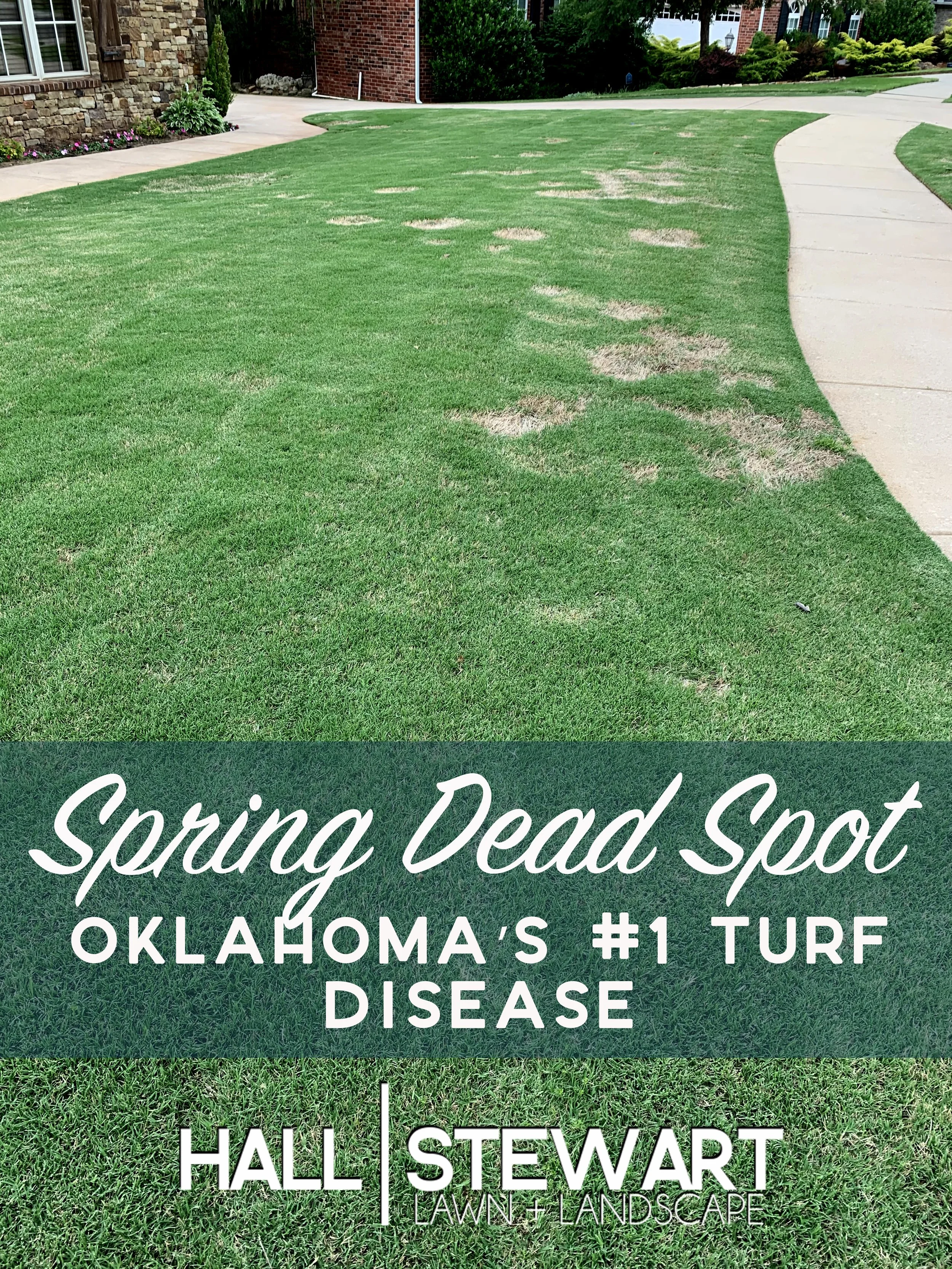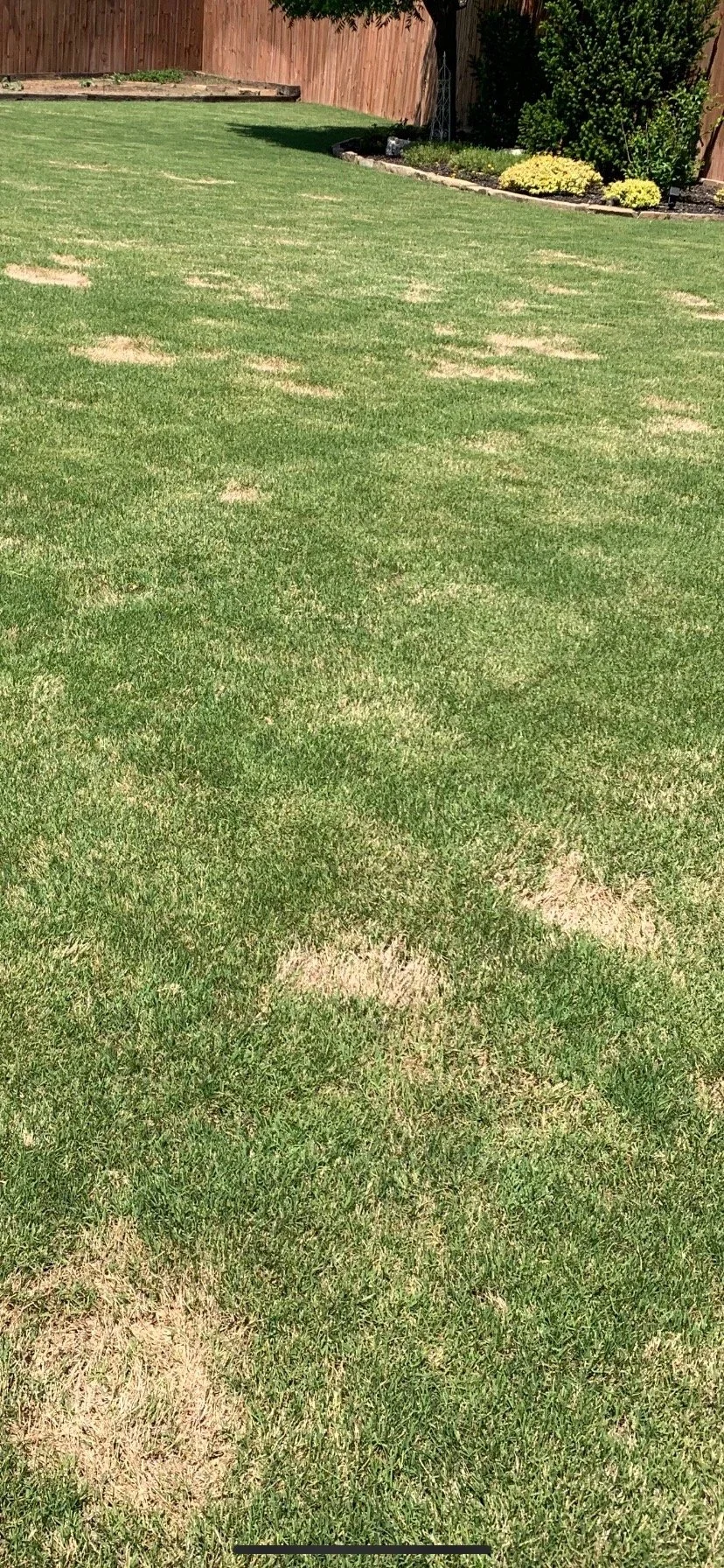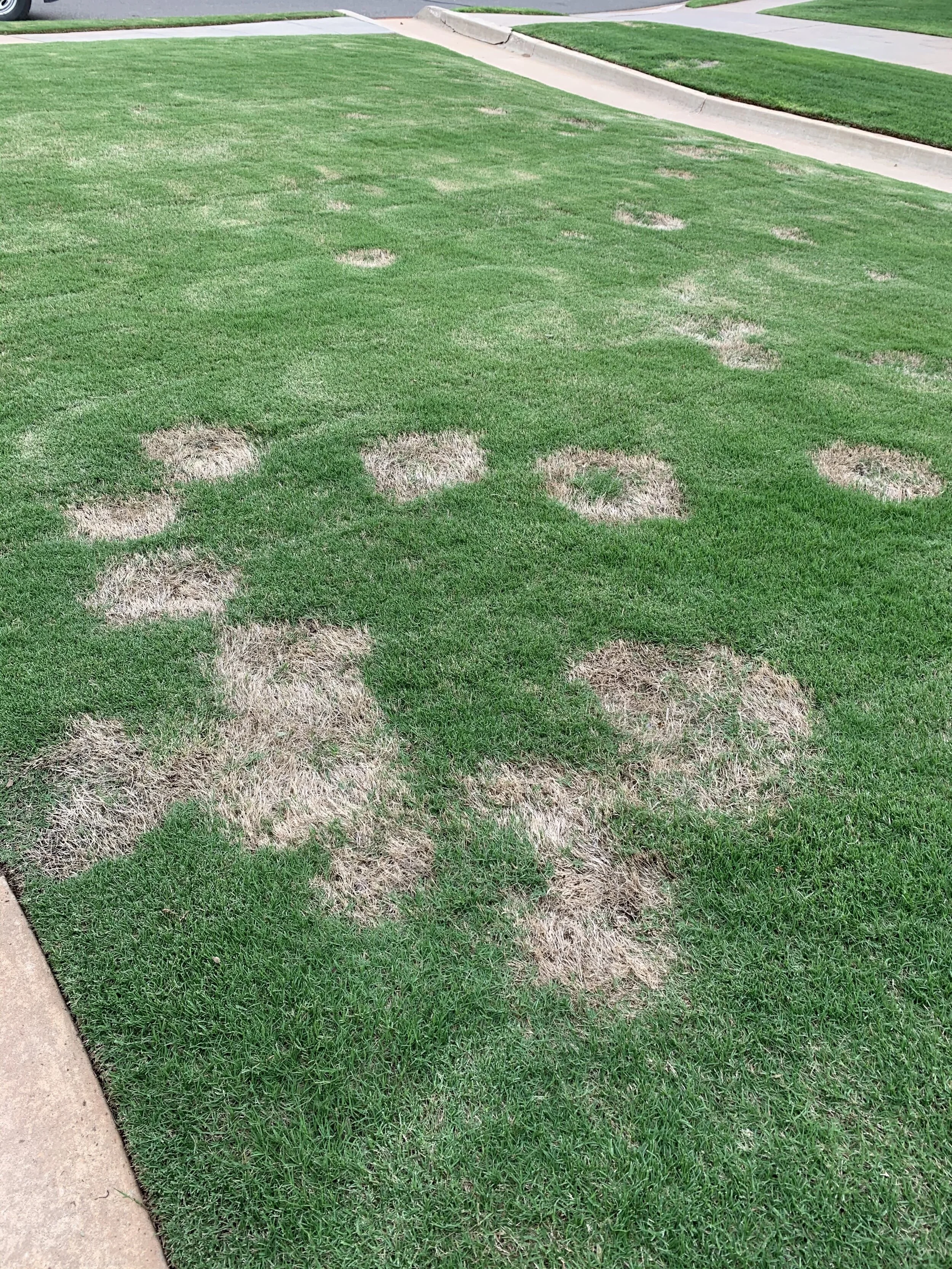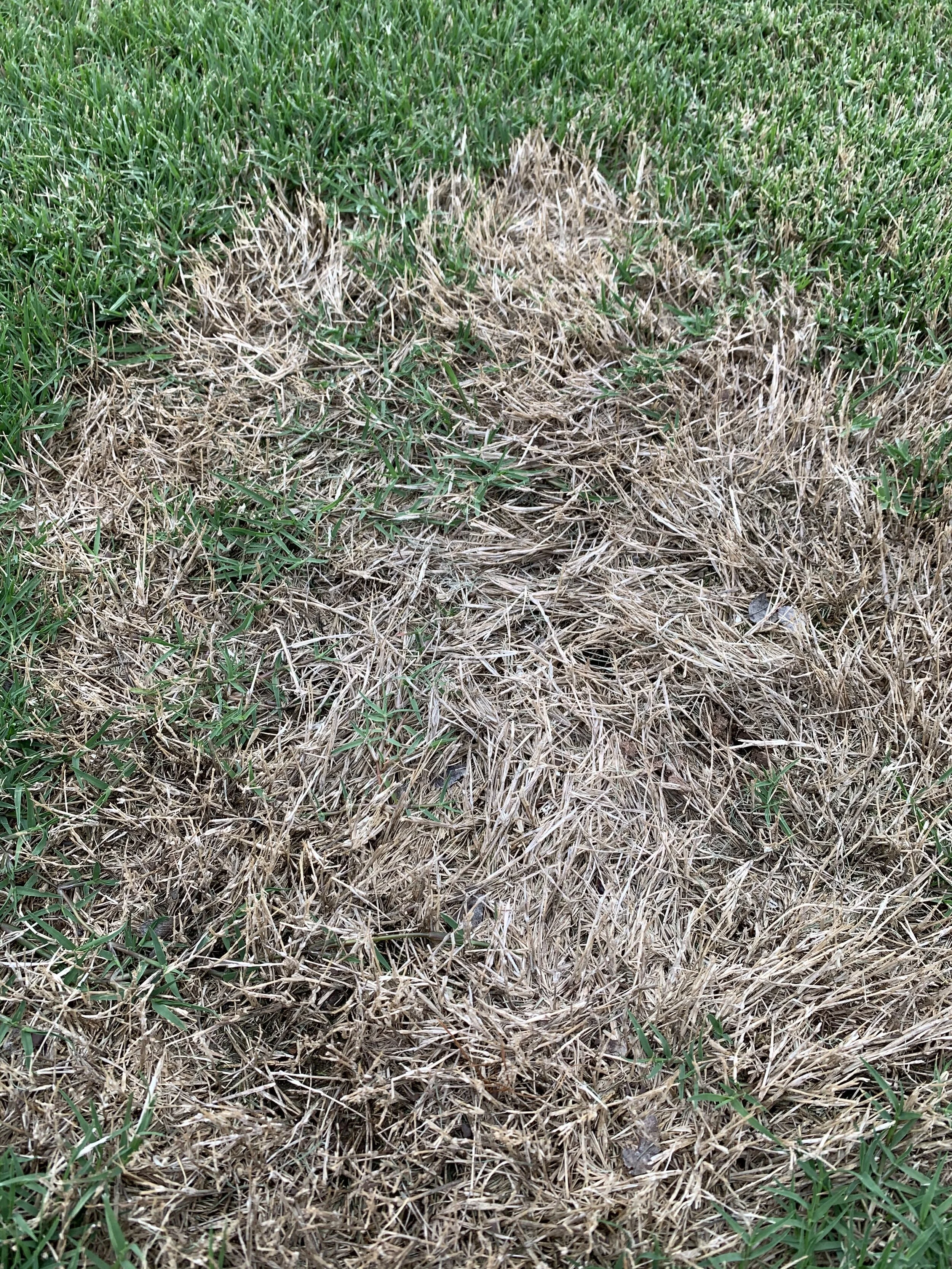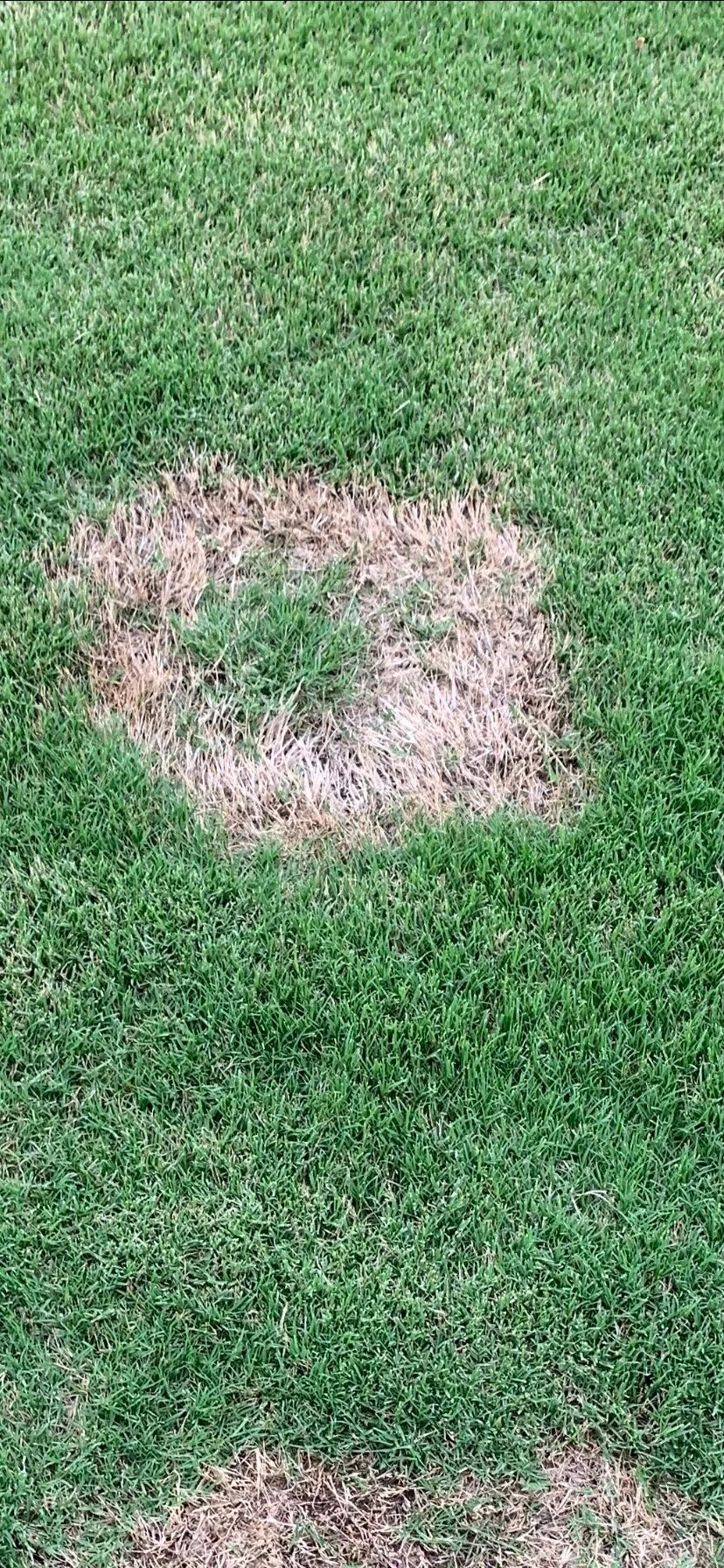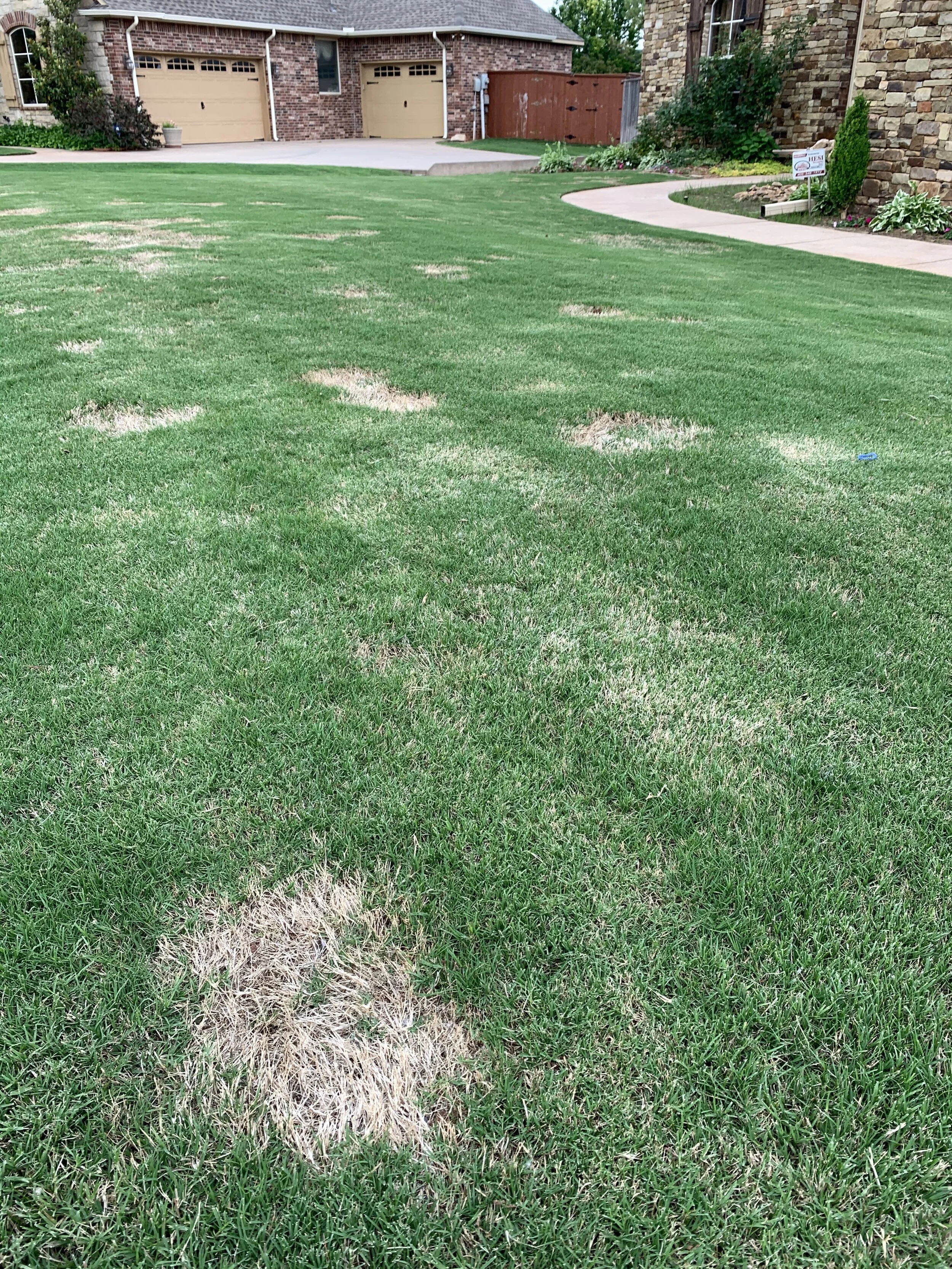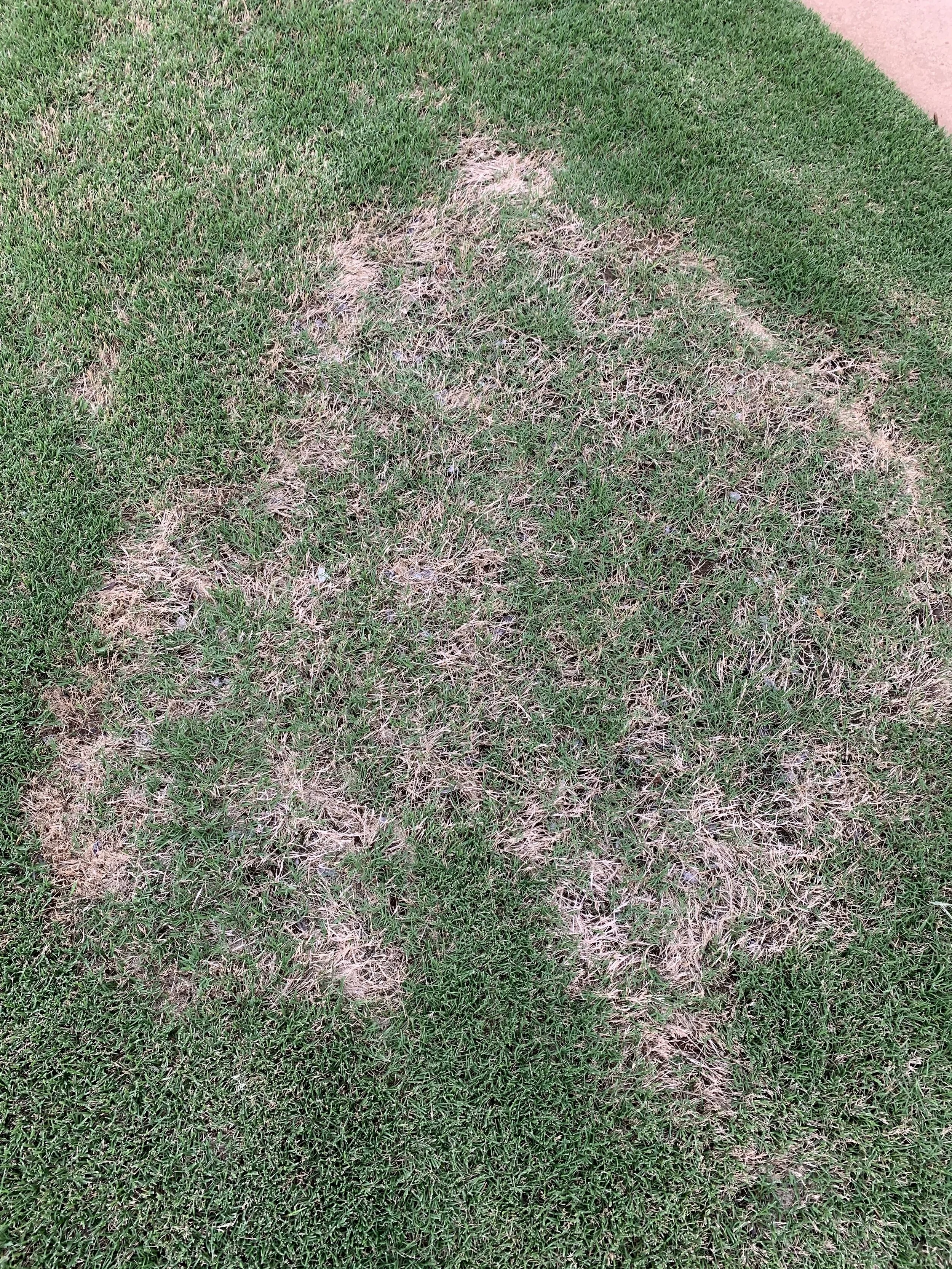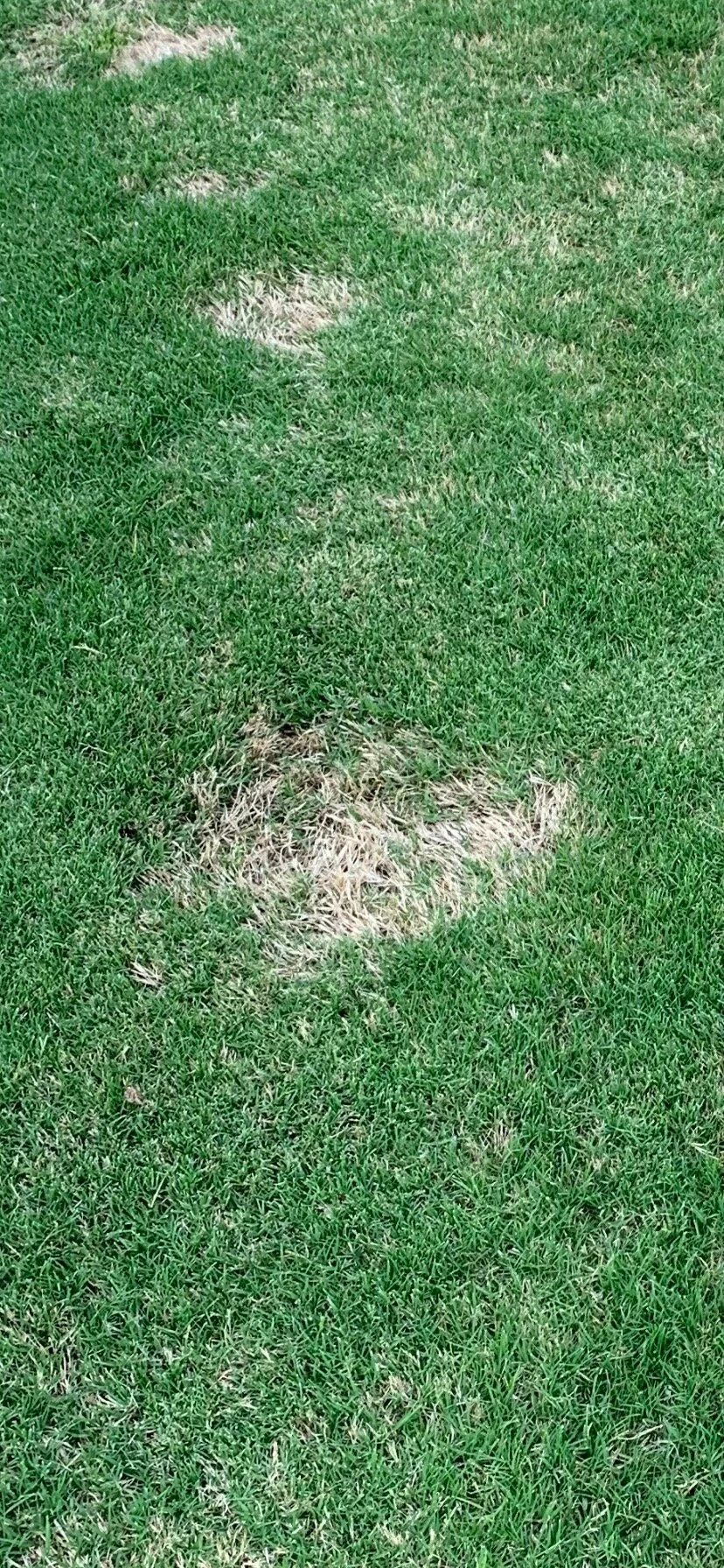Spring Dead Spot – Oklahoma’s #1 Turf Disease
Oklahoma is in the transition zone.
What is the transition zone?
It is the zone between where warm season turf grows best and the zone where cool season turf grows best.
Warm Season Turfs: Bermuda Grass and Zoysia Grass.
Cool Season Turfs: Fescue Grass, Rye Grass, Blue Grass
The transition zone is an overlap area where warm season grasses do well in the heat of the summer while cool season grasses do well in the spring and the fall, and some cool season grasses, such as tall fescue, continue to do well through most summers.
The transition zone is the area where you can’t go wrong growing either warm season grasses or cool season grasses.
Developing and maintaining a great warm season turf can be a challenge in the transition zone where winter temperatures often get colder than warm season grasses prefer and where it is common for an April freeze to stunt warm season turf green-up.
Consistently warming soil temperatures are critical for bermuda to exit dormancy and become active.
This year, the spring has been kind to Bermuda and zoysia lawns by not delivering us a freeze after the first of April. Green-up has been gradual and consistent.
Challenging areas remain. Lawns with partial shade, where soil temperatures lag, are trying to catch up. Thin turf areas, as well as lawns with weak root systems, are also behind in green up.
Our goal each week is to discuss the things we encounter while visiting lawns and landscapes. This time of year, as the warm season lawns are greening up, we get a lot of calls about dead spots in Bermuda lawns.
“What are all the circular dead spots in bermuda lawns?”
Is it grubs?
Is it damage caused by a weed killer?
These are common assumptions, but they are neither.
It is a disease…Spring Dead Spot.
Spring Dead Spot is widespread in Oklahoma and holds the title as the number one disease of Bermuda lawns in the region. You can count on there always being some Spring Dead Spot, but some springs the disease is worse than others. When the fall, winter, and spring conditions are right for Spring Dead Spot, any Bermuda lawn in our region has the potential to be a host for the disease.
Let’s look at the history, symptoms, disease cycle, causes, and possible solutions for preventing and controlling this mysterious Bermuda grass disease.
Spring Dead Spot patches will begin to develop grow of healthy grass in the patch after a couple of years.
History
Spring Dead Spot has been a problem for a long time. The first case was discovered in Oklahoma in 1936 by a golf course superintendent following a harsh Oklahoma winter.
By the 1950s, the unknown disease had become so prevalent in our state that Oklahoma State University plant pathologists began simply referring to the disease as Spring Dead Spot.
In the 1960s, the disease became so widespread in suburban Atlanta lawns, particularly hybrid Bermuda, that the University of Georgia launched a research program. After three years of research, the university still didn’t know the cause and never could get the disease to reproduce in test plots.
In more recent years, Oklahoma State University has focused research on the disease. What they have found is the disease is tough to eradicate, tough to manage, and unpredictable.
Symptoms
Spring Dead Spot makes an appearance in the spring with ugly, rounded, bleached white dead spots in Bermuda lawns. The spots range in size from a few inches to a few feet in diameter. If you dig up the roots in the area, they will appear black and rotting.
Damaged patches tend to recur in the same spots year after year. After a couple of years, the center of the spots will begin to develop a patch of healthy turf.
Spring Dead Spot typically isn’t active in newer lawns. It is common for it to first make an appearance 3 or 4 years into a new lawn. Just as strangely, the disease often becomes less active after a few years. All this just adds to the mystery of the disease.
This coincides with my experience: the disease is more common in newer neighborhoods and rarely found in older established areas of the city.
Because the pathogen causes rotting of the roots, rhizomes and stolons, the susceptibility to winter injury increases in the affected areas. The colder the winter or the harsher the April freeze, the more spring dead spot damage we see.
A better example of healthy turf grass growing in the Spring Dead Spot patch after a couple of years.
Disease Cycle
In Oklahoma, the disease becomes active starting in September as soil temperatures begin to cool and reach 70 degrees and remains active through the winter if soil temperatures stay above 50 degrees.
Recovery starts in the late spring and continues through the summer as healthy turf around the Spring Dead Spot area grows into the damaged area.
Because the damaged spot often doesn’t have time to completely heal and develop strong roots, the same spots reappear each spring. Research shows that the spots can reappear in the spring because of freeze damage, even if the disease isn’t active that year.
Causes
The most serious Spring Dead Spot outbreaks occur in highly managed Bermuda, often hybrid types. It is a common problem in turf that receives heavy nitrogen fertilizer applications, mowed at low settings, and receives frequent foot traffic.
Turf grass that receives late-season applications of nitrogen to extend green color are more prone to the development of Spring Dead Spot.
More cold tolerant varieties of Bermuda grasses have less problems with the disease than hybrid types that are less cold hardy.
Cultural Practices for Spring Dead Spot Management
No single management practice will provide complete control of Spring Dead Spot. The best prevention and control of Spring Dead Spot comes from practices that promote a dense turf and a healthy root system. Because the disease is more prevalent in tight compacted soils, which often have poor root systems, annual aeration is important as it will promote a healthy root system and lessen the probability of the disease.
Although the impact of soil pH is unclear on the development of Spring Dead Spot, an annual soil test to ensure the correct pH is maintained will encourage plant vigor and reduce turf stress.
Recovery improves with a fertilizer routine that ensures the lawn will receive 3 to 5 pounds of nitrogen per 1,000 square feet during the growing season with the first application being made in April to May as soil temperatures consistently rise.
Applications of more than .5 pounds of nitrogen after September 15 must be avoided. Some research shows that heavier applications of potassium in the fall promotes winter hardiness. Others believe, soils in our region already contain sufficient potassium, if the soil pH is near neutral.
The desire to have a green and actively growing bermuda lawn as long into the fall as possible may be the most common practice that leads to the development of Spring Dead Spot.
If you have small areas of the disease in your lawn, the best solution is to remove the soil in the damaged area to a depth of 12” and replace it with new soil.
Raising the mower height going into September will increase the leaf surface resulting in higher levels of carbohydrate reserves in the roots. The result will be more insulation for winter temperatures.
Spring Dead Spot after a few seasons of recovery.
Chemical Management
A fungicide applied in the fall as soon as soil temperatures fall to 70 degrees followed by a second application in 30 days may result in control of the disease. It is important to commit to two applications as research shows a single application is generally not effective. Spring applications of fungicides are not as effective as the disease is not active in the spring.
Keep in mind fungicide results can be inconsistent from year to year. Control through fungicides requires a 2-to-4-year commitment for consistent results.
Prevention and control of Spring Dead Spot can be tricky.
The disease can be very frustrating.
Everyone wants their turf to look the best, but if you have a Bermuda lawn, there is always the chance Spring Dead Spot will make an appearance.
If you are experiencing Spring Dead Spot keep in mind the best recovery occurs over time and with warmer temperatures. Don’t give up!
Commit - To best maintenance practices, including aeration, to develop a thick turf with a healthy root system.
Most Critical - Avoid the temptation to promote late season growth.
Remove & Replace Soil – The best solution is to remove 12” of soil in the affected areas and replace it with new soil.
Schedule - A fall fungicide treatment plan.
If you have more questions about Spring Dead Spot, or any other lawn care issue, please give us a call.
Lorne Hall
Hall | Stewart Lawn + Landscape
(405)367-3873
The best way to repair small areas of Spring Dead Spot is to remove the damaged soil to the depth of 12” and replace with fresh soil.

